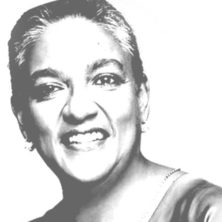Perspectives
Gender as Shorthand
We started our Practice Circle as has become CoreAlign custom: stretching and, I’ll admit, straining way past any low hanging fruit. Our topic for this first circle: What do we mean by gender in today’s world?
I expected messy. And, that our guinea pig participants and newbie staff would muddle through untidy conversations that might leave us with less clarity, not more. I, for one, have ended most of my attempts to discuss gender more confused and irritated than when I began.
The Practice Circle brought into focus our reliance on gender as a shorthand for complicated ideas and practices that we are often too confused by or hoping to skirt past needing to articulate well. But, I quickly realized, in the personal and the political, we make this simplified substitution at our peril.
My first ‘aha’ came in the introduction. Viveka, our gifted facilitator, put up the name-tag pictured above, asking us to introduce ourselves by our gender. Some shared earnest, traditional gender names and a few created goofy, insightful and poetic appellations. I offered up “brainy brown biker.” But as we went around self-affixing labels, I realized that these were describing a set of behaviors and desires related to our bodies. Some of the behaviors and desires matched cultural assumptions about what different bodies ought to do, and others rubbed purposefully against these strictures. And this is, historically, what gender has been used to accomplish: it’s a compact designation for what certain body structures properly ought to want and do, or eschew and avoid.
Gender is a favored form of building boxes, to sort ourselves mostly in binary ways: weak/strong, big/small, provider of egg/sperm, sex with people with vaginas/sex with people with penises, intuitive/obtuse, brainy/emotional, long hair/short hair, facial hair/smooth-faced, and the list could go on. Evolutionary advantage demands our brains conserve energy, so they err on the side of assumptions and strict categories to avoid a long, energy-depleting process of figuring out: who is this human being in front of me? This system probably worked more effectively in the past, when we were allowed fewer deviations from the norm. Now, however, in an increasingly diverse and globalized world we are becoming more aware that people are expressing themselves in a 100,000 different ways, and these guesses don’t work. We must do the work of figuring out who people are and what they desire, and this doesn’t always come from a few visual cues. So much for conservation of mental energy!
In addition, I realized that this suppositional fallacy extends to our work. Many of us have thoughtfully stopped issuing blanket statements about working to improve the lives of ‘women’. ‘Women’ describes a huge container, so we specify with descriptors like women of color, poor women, young women, queer women, disabled women. But these designations are often only marginally better.
Embedded and implicit in these gendered classifications is a theory of oppression and our hope for its end. For example, we fight for the rights of young women because we presume that as a group they suffer particular structural mistreatments and that our work addresses those indignities. But unless we are even more specific, and identify the specific behaviors and desires of the group we are seeking to affect, our efforts are scattershot. Are we targeting all young women, or urban poor teen girls, or Latina immigrant young adults, or transgender sex worker youth? As we spell out more specifically whose lives we work to improve, we will be forced to articulate our assumptions about who they are, the institutionalized challenges they face, and why changes in their lives will make a difference, to them and to us all. Our assumptions and strategies will be exposed to the light of rigorous analysis and evaluation.
Case in point, I’m a woman, a person of color, an immigrant, a South Asian and straight. But this list of common categories fails to express that there are some struggles I share with others inside these boxes, and many I don’t. Not all South Asian women are raised under the cloud of disappointment that they weren’t born boys. When opponents trot out their “sex selective abortion bans” as Astroturf efforts to save little Asian girls, we cry stereotype! But, this means we must look at the detail in this very large group and no longer paint with broad strokes.
My intelligence is not questioned as much as that of some other women of color. My sexual desires are not held up as suspect. My immigrant journey has been easier than some and harder than others. My skin color has been a source of connection and barrier, depending on the setting and circumstance.
If we aim to change the damaging conditions in people’s lives, we need to be laser sharp about who is on the giving and receiving end of these harms. Time is too short, resources too scarce and the hurt too big for sloppiness in our groupings or our theory of change. Using gender to designate way more than it can is one trap we easily fall into that keeps us from getting ahead.
There’s a time for broad gender categories to create common cause and communicate a vision without getting lost in the weeds. But, otherwise, we need to hone in on the change we seek and the people we hope will benefit the most, particularly at the personal and programmatic levels.
